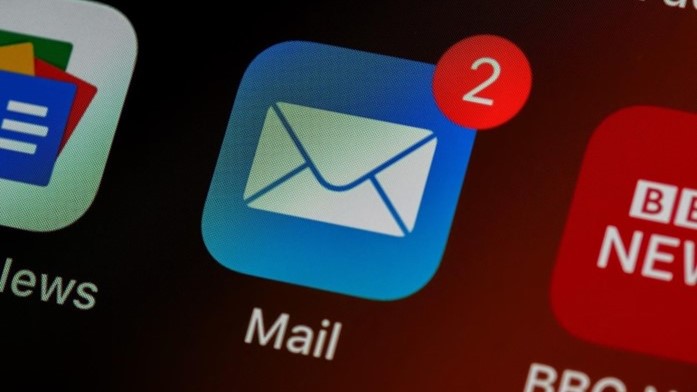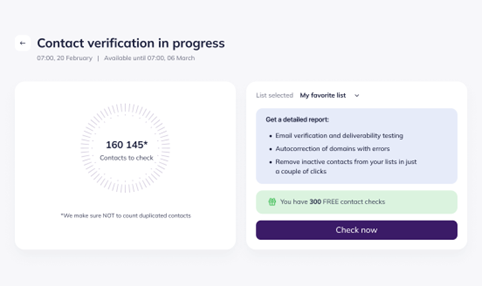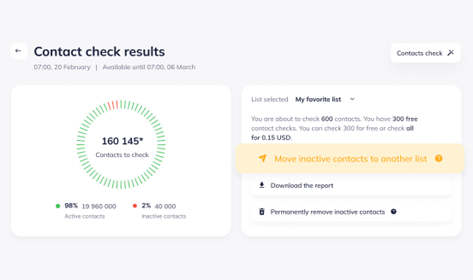
Are your email campaigns reaching real people or vanishing into the void?
In the dynamic world of email marketing, nothing feels better than having your messages reach the intended audience. However, many marketing professionals find email deliverability a challenge—and it’s because of email addresses.
When people change their emails, their former ones are deactivated due to inactivity, making your emails bounce, damaging your sender’s reputation, and hindering the success of your campaigns.
So, how can you ensure you’re reaching your audience?
Here are five foolproof methods to verify email validity and bolster your marketing success.
1) Sending a Test Email
The simplest way to verify an email address is by sending a test email and see what happens:
- If the email goes through, the address is valid.
- If you receive a bounce-back message, the address is fake or inactive.
However, you still need to be careful when sending test emails. Here’s why:
- Soft Bounces – These are caused by temporary issues, like a full inbox or a busy server—the email might still be good.
- Hard Bounces – The email is invalid or inactive, and sending more emails could harm your business.
- Hurts Your Sender Reputation – Too many bounced emails will make providers think you’re a spammer.
2) Checking Syntax Errors
Many marketers don’t realize that the address they’re sending emails to might be incorrect. You always need to check the format, or your emails may get bounced.
A valid email address should follow this pattern:
Look out for these common syntax errors to avoid bounced emails:
- Missing “@” or “.” (e.g., johndoe[at]gmail[dot]com)
- Extra spaces or weird symbols (e.g., john doe@gmail,com)
- Too many dots (e.g., john…doe@gmail.com)
- Typos in the domain (e.g., johndoe@gnail.com instead of gmail.com)
If an email looks like a jumbled mess, it’s probably fake—scan it to catch apparent mistakes so you can discard it from your list.
3) Using Email Verification Tools

With today’s technology, you don’t have to manually check email addresses—it’s tedious and prone to errors.
Instead, you can use email validation tools like Selzy verifier, which automatically validates email addresses to help you identify which addresses will help you deliver your message.
Here’s why many email marketers use them:
- Instant Checks: They find fake, misspelled, or inactive emails before they ruin your campaign.
- No Risky Test Emails: This tool verifies emails without sending a single test email.
- Deep Verification: This tool goes beyond basic checks. It analyzes domains and mail servers and even detects disposable emails that vanish after a few uses.
- Saves Time and Boosts Results: It can scan hundreds and thousands of emails using automation, making email validation faster and more efficient.
With email verification tools, you can always ensure better deliverability, higher engagement, and stronger campaigns.
4) Checking DNS records and MX lookup
While every email has a domain (like @gmail.com or @yourbusiness.com), not all domains can actually receive emails.
This is where checking the DNS and MX records comes in. Here’s how you can do it:
- DNS Lookup: This check verifies if the website (or domain) exists. If it isn’t real, then the address isn’t either.
- MX (Mail Exchange) Records: These records tell if a domain can send or receive emails. If there are none, then the email address is dead.
Free online tools help you check DNS and MX records in seconds. After all, if the email domain or server isn’t working, you’re sending emails to an address that will never receive nor read it.
These methods help you verify whether an email address is working or not. Verify first to avoid bounces later.
Why Email Validation Matters in Marketing

Sending emails to bad addresses will never land and will hurt your reputation as a business.
Here’s why verifying them is essential:
Fewer Bounces
Bounced emails make you look like you’re spamming, but a clean email list will ensure your messages are delivered.
Better Sender Reputation
Email providers track who sends legit messages and who sends spam. You will likely be in spam if you have too many bounced emails.
No Spam Traps
Some addresses exist to catch spammers—hitting one means you’ll ruin your deliverability.
Higher Engagement
When your emails reach real people, they’ll be opened, clicked, and converted into sales.
Saves Money
Many email services charge per email sent—why pay to send emails to addresses that don’t exist?
With email verification, you can clean your emailing list, which will reduce your headaches and increase your business’s conversions.
Best Practices for Maintaining a Clean Email List
People change their email addresses more frequently than you think—so cleaning your list only once isn’t enough. Here are some email marketing best practices to ensure your list remains clean for every campaign:
- Use Double Opt-in: Have subscribers confirm their email before joining your list—weeding out fake signups.
- Remove Inactive Subscribers: Subscribers who haven’t engaged with your emails in months should be removed, eliminating the chances of bounced emails.
- Monitor Bounce Rates: Check your bounce rates—it might be a sign that your list needs cleaning.
- Segment Your Audience: Separate users who engage from inactive ones. This will help you send more targeted, relevant emails to the right people.
Following these tips can ensure that someone will engage with your messages, so no effort gets wasted.
Conclusion: Real Emails, Better Results
Effective email marketing campaigns start with a clean email list. This ensures your messages land in real inboxes, not just the void. Verifying email addresses can reduce bounce rates and avoid spam traps, enabling your business to save time, money, and effort.
Whether you’re checking for syntax errors, running DNS lookups, or using verification tools, cleaning your emailing list pays off in better results.
Remember, a healthy email list will lead to a successful email campaign. By maintaining a clean emailing list through email validation, you can ensure your emails reach real people who want to hear from you.



